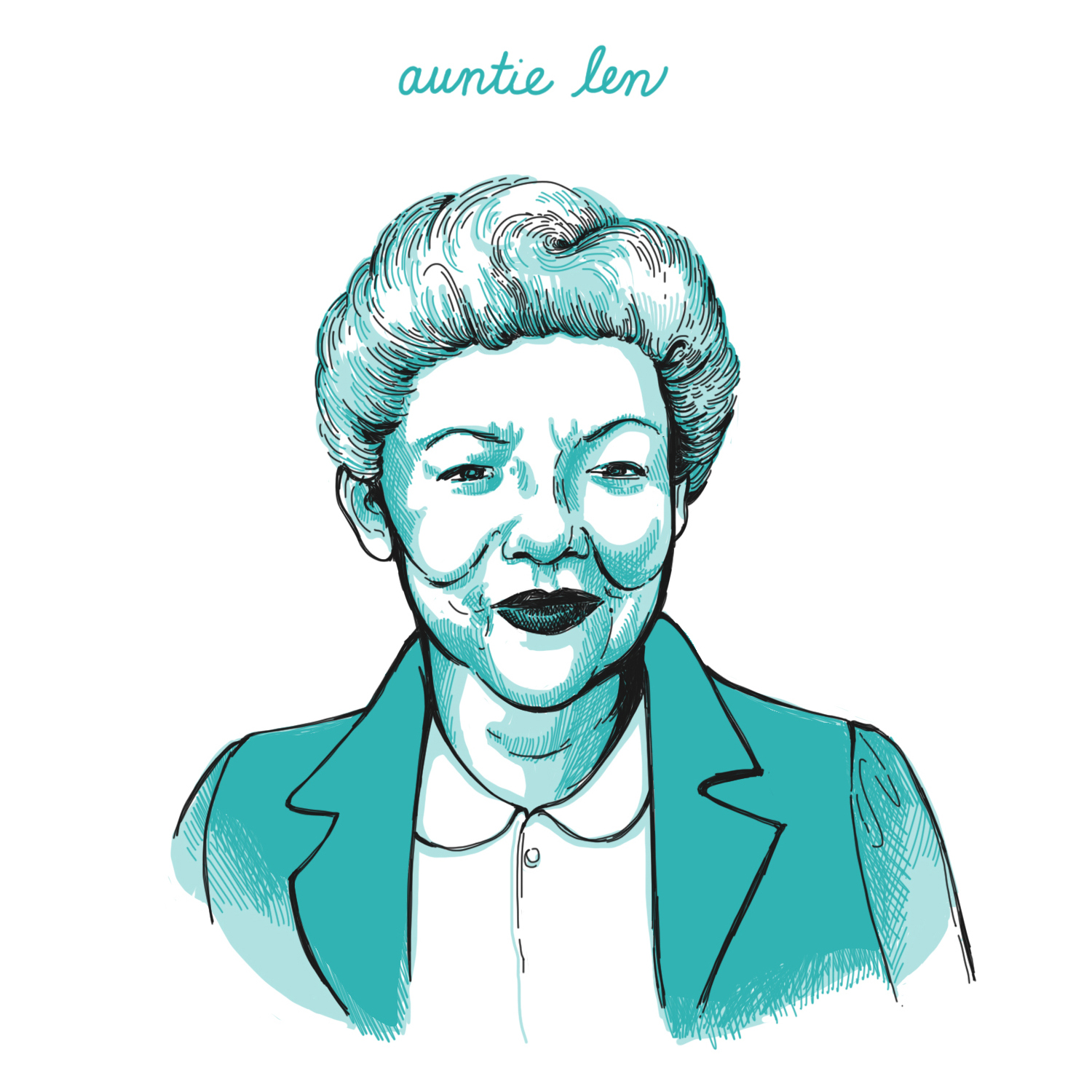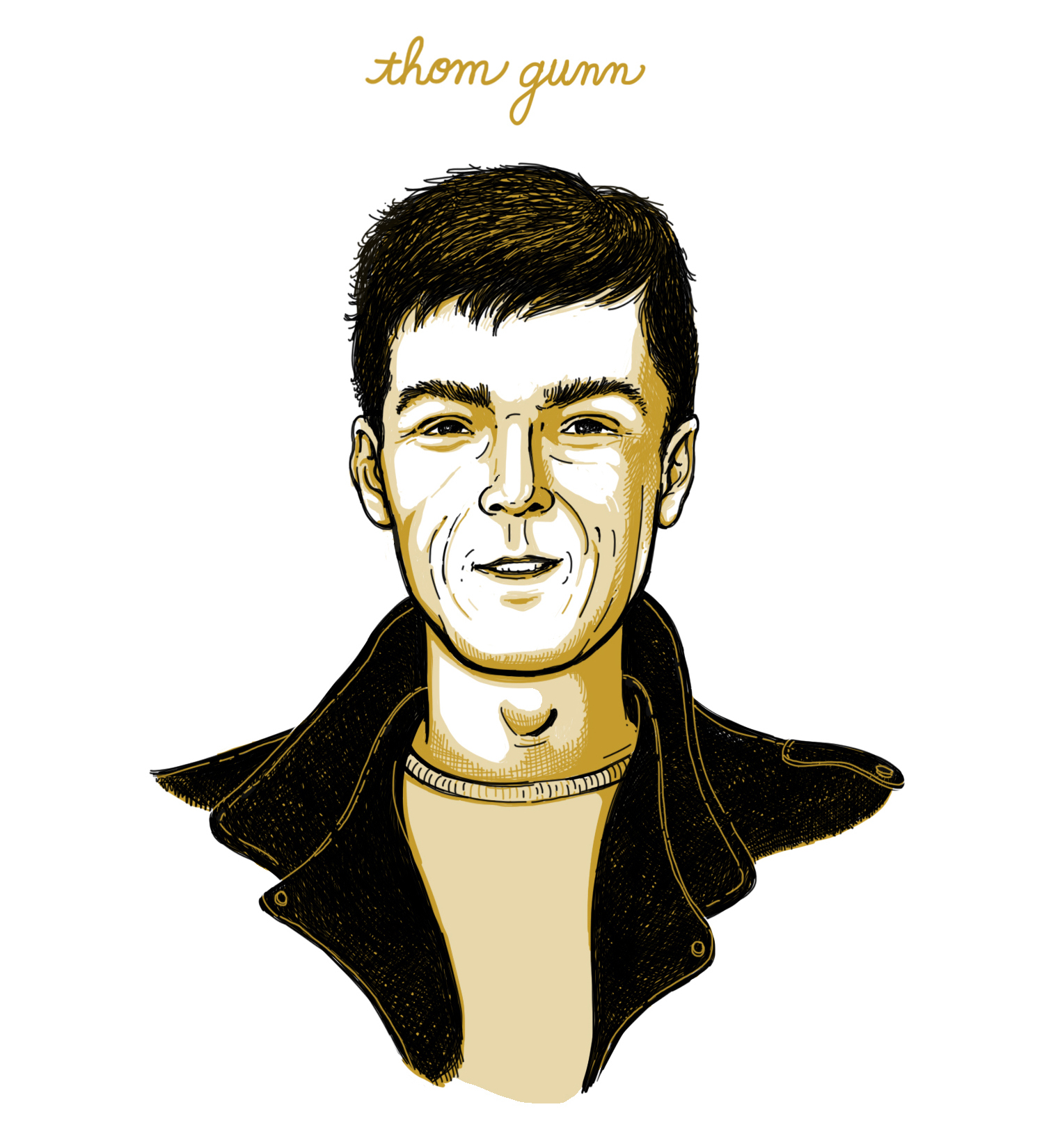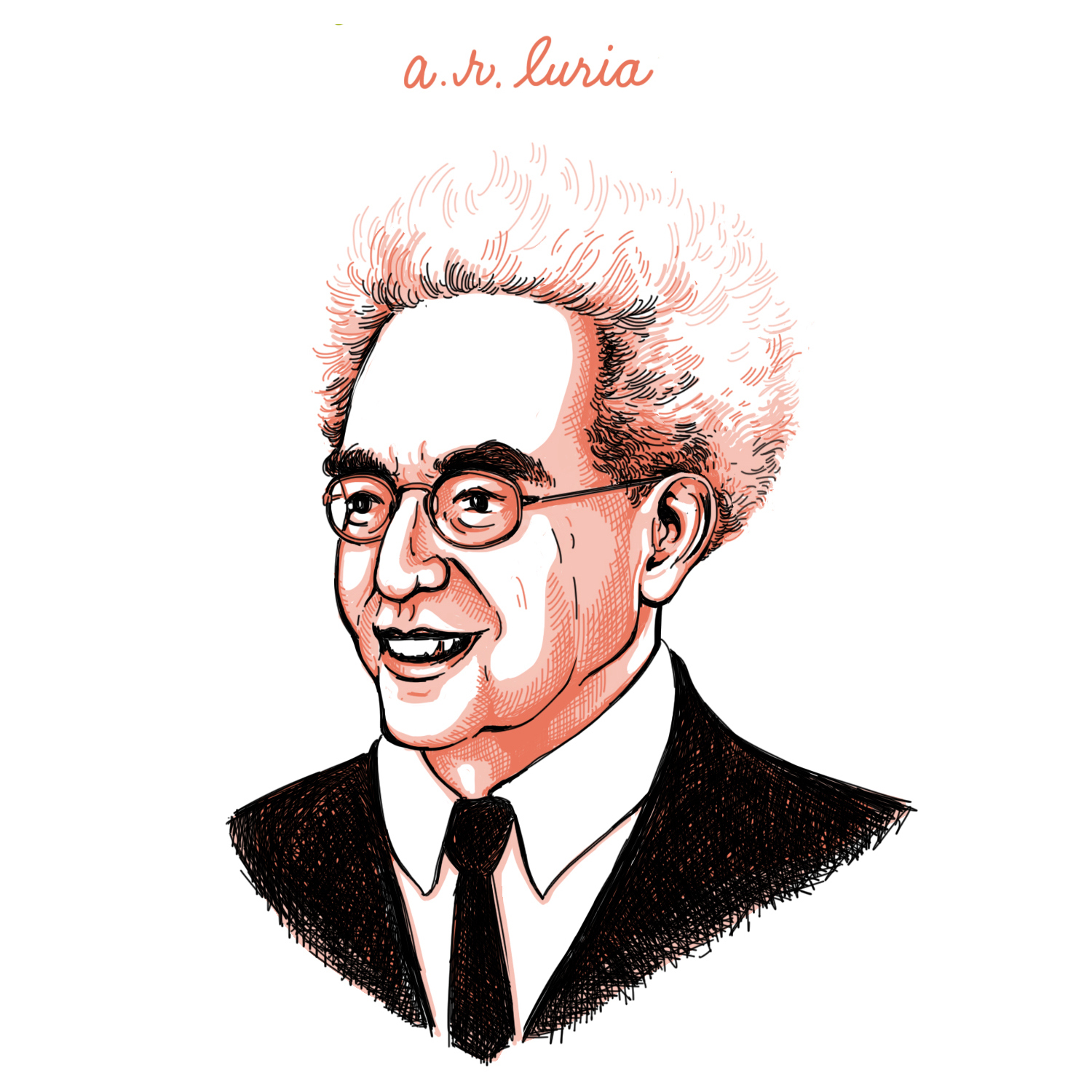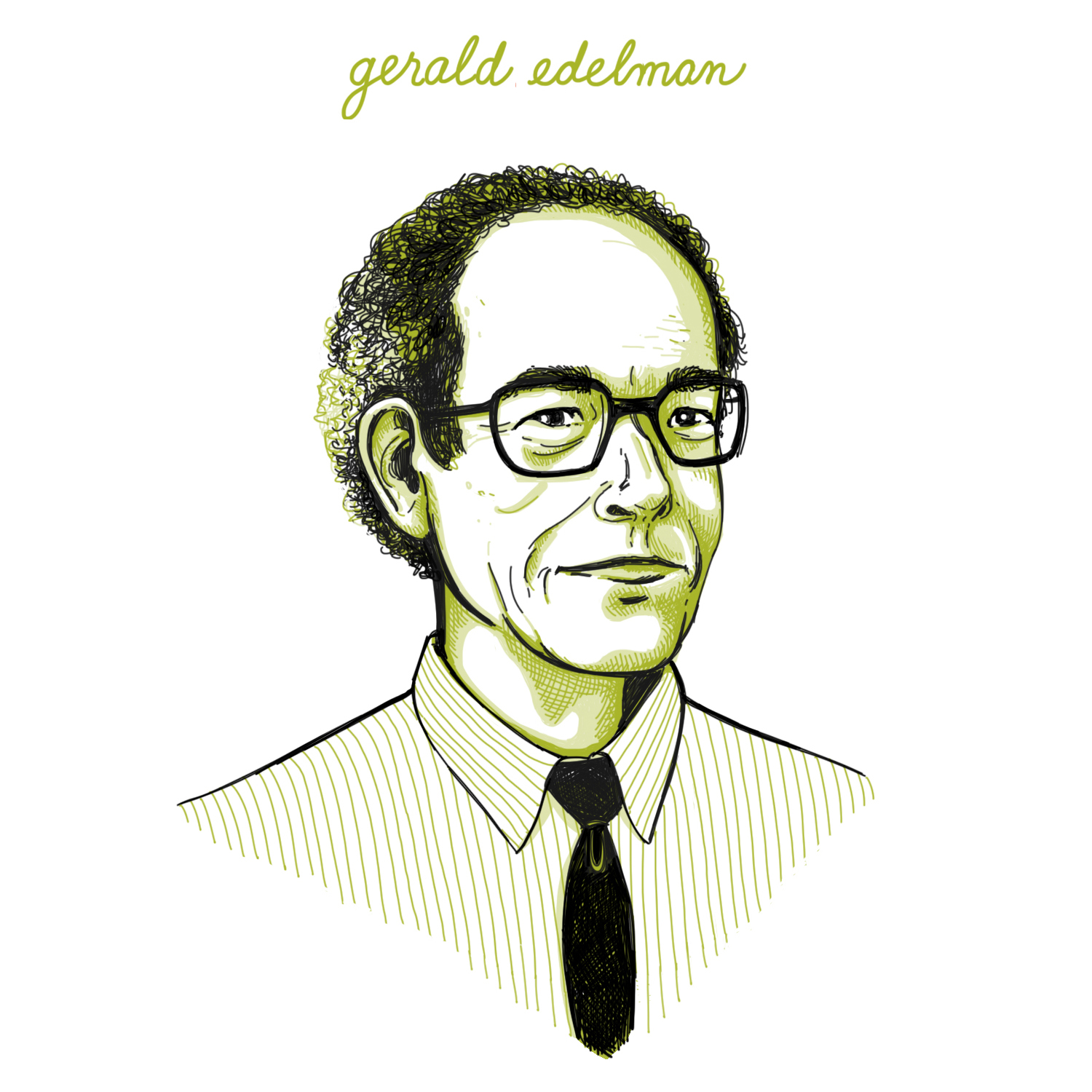Oliver Sacks: Under the Influence
Oliver Sacks was wealthy in friends, mentors, and other inspiring companions. Let’s meet a few of them.
In his autobiography, On the Move: A Life, the late, great neurologist Oliver Sacks remembers multiple people who made an impression on him during his 82 years. As the SciFri Book Club gets underway, here’s an introduction to a few of the characters who enriched his life, personally and professionally.

Lennie Landau (1892-1978)
Relation to Sacks: Maternal aunt; Sacks’ unflagging “cheerleader.”
Helena Penina Landau, also known as “Aunt Lennie,” was one of Sacks’ six maternal aunts and her nephew’s kindred spirit.
Landau was a teacher in London’s East End before she became head of the Jewish Fresh Air School for Delicate Children, located in Cheshire, in the 1920s. The term “delicate” was broad, according to Sacks in On the Move: A Life—the school welcomed children with autism, asthmatics, and “nervy” kids, among others. As Maria Popova, one of our Book Club readers, writes on Brain Pickings, “the school’s focus bespoke, most of all, Lennie’s keen sensitivity to difference and to children’s anguishing consciousness of being different, whatever the degree or direction of difference.”
As a youngster, Sacks loved visiting the school, where Landau gave a square yard of ground to every student, as well as her nephew, “in which we were free to plant whatever we wished,” he wrote in On the Move. He also enjoyed “botanizing” in the surrounding Delamere Forest with his aunt and her fellow teachers, and swimming in a small nearby pond.
After retiring in 1959 in her mid-50s, Landau traveled the globe before settling into a small London flat a year later, the same year Sacks left England for North America. The pair then became devout pen pals, exchanging lengthy letters about their travels and other escapades. (Landau wrote her letters with a broad-nibbed fountain pen, later converting Sacks to the same.) Landau also kept Sacks well-stocked in Blue Vinny cheese from a single dairy farm in Dorset.
Unlike Sacks’ parents, who often wrung their hands over his trajectory, Landau was an unwavering champion. “I felt loved by her, and I loved her intensely, too, and this was a love without ambivalence, without conditionality,” he wrote. “Nothing I could say could repel or shock her; there seemed to be no limit to her powers of sympathy and understanding, the generosity and spaciousness of her heart.”
As Popova concludes, “it was Lennie’s unflinching support that carried [Sacks] forward—toward becoming a writer and, above all, toward becoming himself.”

Thom Gunn (1929-2004)
Relation to Sacks: Longtime friend; literary muse, mentor, and foil.
Thom Gunn was a poet who grew up in northwest London, like Sacks. He published his first poetry collection, Fighting Terms, in 1954, a year after graduating from Trinity College in Cambridge. Soon after, he moved to San Francisco, where he continued to write and periodically teach at the University of California, Berkeley. He was “much loved by his students,” Sacks wrote in On the Move.
In 1958, Sacks received Gunn’s The Sense of Movement (which includes the poem “On the Move”) from a friend. Sacks “devoured” the book—his introduction to Gunn’s work—and resolved to meet the poet. His wish came true a few years later when he encountered Gunn at a party in San Francisco. Sacks was starstruck. “I was intensely conscious of his maturity and assurance, how he knew who he was, what his gifts were, what he was doing,” Sacks wrote. The two became friends for life.
In Gunn, Sacks found a literary mentor and confidante, and in their longtime correspondence, they traded book recommendations and personal writings. “Thom was far more articulate than I when it came to commenting on each other’s work,” wrote Sacks. “I admired almost all of his poems but rarely attempted to analyze them, whereas Thom was always at pains to define, as he saw them, the particular strengths and weaknesses of whatever I sent him.”
After Sacks sent Gunn a copy of Awakenings, he received profound words of praise from his friend. Where sympathy was once lacking in Sacks’ writing, wrote Gunn in a letter, “it is literally the organizer of your style [in this book].” Sack was admittedly “thrilled by this letter, a bit obsessed.”
Gunn’s own writing, Sacks observed, ranged broadly in “subject matter and sensibility,” and “he often alluded to, or borrowed from, other poets and other sources. There was no tiresome insistence on ‘originality,’ and yet, of course, everything he used was transmuted in the process.”

A. R. Luria (1902-1977)
Relation to Sacks: Professional contact; inspired Sacks’ narrative style of scientific storytelling.
The Russian psychologist and neurologist Alexander Romanovich Luria was largely considered to be the founder of neuropsychology, or the study of brain-behavior relationships, in the Soviet Union. He was known for emphasizing a “cultural-historical” approach to psychology—which posited that a person’s cultural and social environment shapes psychological processes—and for developing the idea that the brain consists of three main functional units that work in concert during each mental activity.
Luria authored tomes including Higher Cortical Functions in Man and The Working Brain, which explored neuropsychological concepts, diagnostic methods, and his own theories. He also wrote two highly detailed biographies of individual patients, such as Mind of a Mnemonist, about a man able to recall seemingly limitless amounts of information. Sacks picked up the book in 1968, when he was working as a clinician at Beth Abraham hospital in New York City. He first thought he was reading a novel but then realized “that it was in fact a case history—the deepest and most detailed case history I had ever read.”
For Sacks, Luria’s approach to scientific narrative was an epiphany. “Luria’s endeavor—to combine the classical and the romantic, science and storytelling—became my own,” he wrote in On the Move. “[Mind of a Mnemonist] altered the focus and direction of my life, by serving as an exemplar not only for Awakenings but for everything else I was to write.”
Sacks never met Luria personally, but the two struck up a written correspondence during which they discussed not only clinical observations, but also Luria’s affinity for detective stories. At one point, when Sacks was deliberating about whether to write a book about his experience sustaining a leg injury, Luria gave him a much-needed kick in the pants by way of a succinct telegram. “DO IT,” it said. (Luria followed with more lengthy encouragement, suggesting that Sacks was pioneering a new clinical approach to peripheral disorders. After agonizing even more, Sacks finally published A Leg to Stand On.)
When Luria died in 1977, Sacks wrote his obituary for the Times.

Gerald Edelman (1929-2014)
Relation to Sacks: Professional contact; enlightened Sacks to a new way of thinking about how the brain relates to the mind on the individual level.
The American scientist and clinically trained physician Gerald Edelman was a polymath, shifting seamlessly among fields including immunology, developmental biology, and neuroscience (and at one time, he considered becoming a professional violinist). While he shared the Nobel Prize in Physiology or Medicine in 1972 for work that determined the chemical structure of antibodies, Edelman is perhaps best known for developing a theory of consciousness—that is, how the brain as an organ gives rise to the thinking associated with the mind. He called it “neural Darwinism.”
In 1987, Edelman published Neural Darwinism: The Theory of Neuronal Group Selection, the first in a series of books that detailed his “very radical idea,” as Sacks put it in On the Move. Essentially, Edelman posited that while some mechanisms (like the reflexive response to pain) or biases (toward food or warmth, for example) are genetically encoded and innate, little else in our brain is hardwired.
Instead, groups of 50 to 1,000 neurons are organized into millions of larger units, or “maps,” which form as our sensory organs perceive the world. As an organism experiences its environment, those experiences serve to strengthen the mappings that prove most useful for making sense of, and interacting with, reality. Organisms with more complex nervous systems, such as humans, further rely on these maps to make generalizations about their environment, and to recognize past and future. (For more on Edelman and his theory, check out this New York Times profile from 1988.)
After reading an article discussing Edelman’s work, Sacks arranged to meet the scientist in 1986 at Rockefeller University in New York, where Edelman ran the Neurosciences Institute. Sacks quickly discerned that Edelman was a man with “a ferocious power of concentration,” and indeed, he “took no holidays, slept little, and was driven, almost bullied, by nonstop thinking.”
The two met again a couple years later at a conference in Florence. At dinner, they exchanged ideas—Edelman explaining his theories to Sacks, Sacks sharing clinical anecdotes, both scribbling on the paper tablecloth to further explore their thoughts. Walking back to his hotel after dinner, Sacks found himself “in a sort of rapture,” he wrote in On the Move. “I thought, ‘Thank God I have lived to hear this theory.’”
Edelman’s theory wasn’t widely accepted in the 1980s—it was so wildly different from earlier ways of thinking about consciousness, and still awaits extensive validation. But for Sacks, neural Darwinism remained “the most powerful and elegant explanation of how we humans and our brains construct our very individual selves and worlds.”
Julie Leibach is a freelance science journalist and the former managing editor of online content for Science Friday.